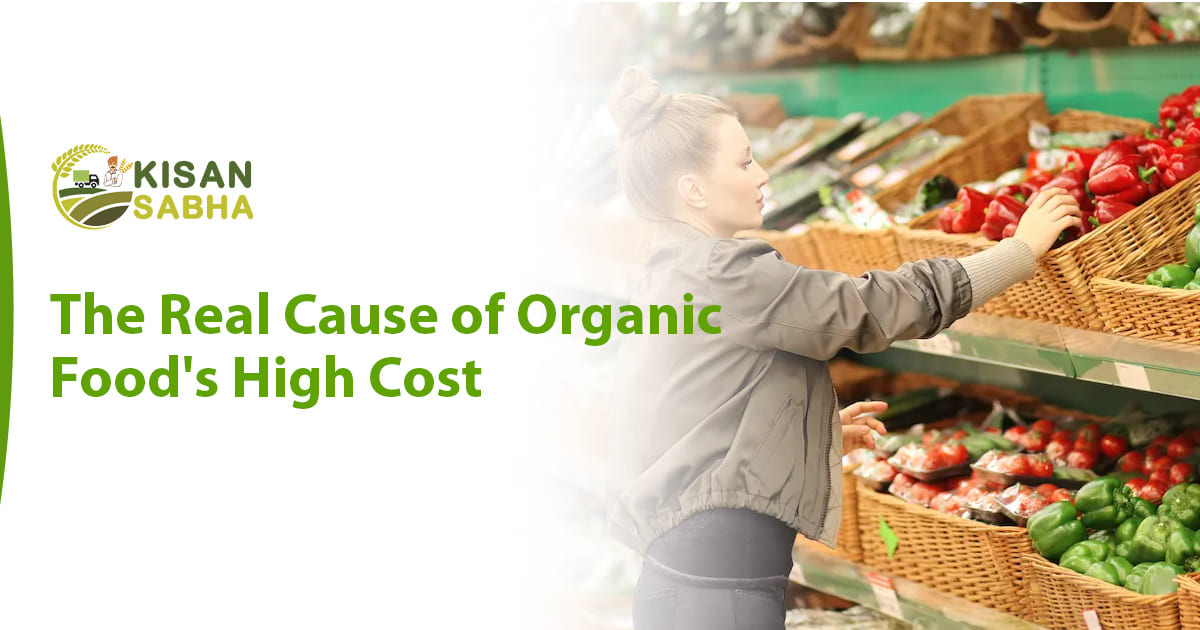Organic food is grown by farmers who prioritize using renewable resources and soil and water conservation to improve environmental quality for future generations. Most traditional insecticides and fertilizers prepared with synthetic chemicals or sewage sludge, bioengineering, or ionizing radiation are not used in producing organic food.
Before a product gets labeled “Organic,” a government-approved certifier inspects the farm where the food is grown to ensure that the farmer is adhering to all USDA organic regulations. Even in this day and age, when there is widespread exposure to chemicals, air pollution, water pollution, and hazardous wastes, we still refuse to spend the extra money that may cost us thousands of dollars if we succumb to such terrible diseases. So, let us try to answer the most frequently asked consumer question…
Why is Organic Food so Price?
Several factors contribute to the rise in the cost of ‘organic-certified’ produce. Let us try to comprehend some of them.
Certifications for Organic Products
Organic producers must pay a substantial registration, accreditation, and certification fee. Many farmers and handlers find these certificates to be costly and time-consuming. Not only are first-time certification fees high but there are also other certification-related fees to consider. Some of the key certification expenditures include certification renewal, farmer education, appropriate organic land, organic animals, organic seeds, and specific processing equipment. If a farmer grows two distinct crops on his organic farm, this cost is twice. Most farmers find it difficult to sustain the expense, and the ultimate price inevitably rises.
Increased Production Costs
Organic food production costs are often higher owing to higher labour inputs per unit of output due to a variety of issues such as unpredictable yields, lack of growth boosters and hormones, crop rotation on small-scale operations, and so on. In our upcoming piece, we will go through each of these in depth.
Increased Shipping Costs
Once we harvest the crop, handling relatively small quantities of organic food results in higher costs because processors and transporters must segregate conventional and organic produce, particularly during processing and transportation. Organic crops have a higher likelihood of spoiling in the absence of chemical treatments. The total operation raises the cost by the time it reaches the market.
Education
Business owners invest substantial time and money in learning the fundamentals of organic farming. Because organic food policies are constantly changing, staying current is critical but also costly. Aside from self-education, organic business owners or companies must ensure that their employees follow proper protocol. Organic farming involves several skill sets and protocols that farmers must follow for an enterprise to maintain its certification.
Also Read:- Top Emerging Trends In Organic Farming For 2024
The Supply-Demand Gap
In consumer words, economies of scale indicate that the more you buy, the more a corporation will make, and the more you produce, the cheaper the prices will be. In this business, supply, and demand is a major concern. Though organic food is becoming more popular year after year, its sales are still far behind conventional food sales. There will be more demand if more people bought organic produce, allowing organic companies to expand. This, in turn, would reduce expenses. Companies, however, seek to make low-cost, dangerous food when people flock to it.
Ineffective Marketing and Distribution
Organic product marketing and distribution are inefficient, and expenses are greater due to small volumes and little customer awareness People who can afford healthier alternatives still gravitate towards conventional food despite knowing the long-term harm it can cause. And, because the market remains underdeveloped, inefficient distribution channels concentrate power in a few hands and allow them to charge premiums, resulting in higher costs for the consumer.
Specialized Services
From farmers to processors, most organic certified companies require particular land and/or infrastructure before they can produce organic food. Organic land is substantially more expensive than conventional agriculture since it must meet a long list of criteria. If an organic company shares space with a conventional company, managers should give more time to ensure that workers do not mix products or, if they do, that workers properly clean processing machines before using them for organic food processing.
Eating inorganic food for an extended length of time is a sure invitation to anomalies and inadequacies. Yes, there is no denying that organic food is more expensive than conventional food. We must, however, consider whether the value of our health is worth the difference.
Conclusion
Organic food is expensive due to tight production regulations, poor yield, long manufacturing times, certification expenses, limited availability, and distribution. Even though it is more expensive, organic food has several advantages for both customers and the environment. Understanding why prices vary allows consumers to make informed decisions about their food purchases, weigh the benefits of organic farming against their budget constraints, and ultimately fully support organic farming and contribute to a healthy and sustainable food system.



